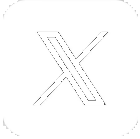Lighthouse & Navigational Systems Overview
TNPA is mandated by the National Ports Act No.12 of 2005 to provide, operate and maintain lighthouses and other Marine Aids to Navigation (AtoNs) within ports and along South Africa’s coastline.
This includes:
All of South Africa’s 45 lighthouses, from Port Nolloth on the West Coast to Jesser Point on the East Coast.
The Automatic Identification System (AIS) Network, a coast-wide network of AIS base stations that provides real-time information about vessels calling at the eight commercial ports, as well as vessels travelling along the coastline: and
an AtoN service to the eight commercial ports by installing, commissioning and maintaining buoys, quay lights, breakwater lights, leading lights, sector lights and fog signals.
LNS represents South Africa at the International Association of Marine Aids to Navigation and Lighthouse Authorities (IALA-AISM), the international body concerned with the provision of Marine Aids to Navigation systems and allied activities at sea and on inland waterways.
LNS has workshops along the coast at Port Nolloth, Saldanha, Cape Town, Port Elizabeth, Durban and Richards Bay, and there is also a staff presence at certain lighthouses. The oldest lighthouse is Green Point Lighthouse in Cape Town, built in 1824.
South Africa’s Lighthouses
There are 45 active lighthouses along the South African coast. Each lighthouse is unique in its appearance and the rhythm of its flash: Learn more about these iconic Marine Aids to Navigation in Lighthouses of South Africa. The book, which is available in two sizes, contains the technical information for all 45 lighthouses, a wealth of historical information and breathtaking images by the late Gerald Hoberman.
There is also a smaller pocket edition that contains only the technical information for all 45 lighthouses and a smaller selection of images. The books are available for purchase directly from LNS and can be couriered at the buyer’s costs.
Please email lighthouse.tourism@transnet.net us for more information.
Internationally Accredited Training
LNS presents the IALA Level 1 Aids to Navigation (AtoN) Manager training in English, as per the complete syllabus for Level 1 AtoN Managers set out in IALA Recommendation E-141.
Lighthouse Accommodation
Self-catering cottages offer a unique holiday with family and friends at the:
Cape Columbine Lighthouse in Paternoster,
Danger Point Lighthouse in Gansbaai, and
Great Fish Point Lighthouse near Port Alfred.
Lighthouse Visits
For a nominal fee, visitors can climb several towers and discover the rich heritage of these important Marine Aids to Navigation.
Weddings and Special Events
Contact us to discuss your weddings, conferences, and other special events.
Filming and Location Hire
Set in unique and pristine settings, often untouched and surrounded by nature, South Africa’s lighthouses offer ideal filming locations.
For More Information
Please Call +27 21 449 2400
The MBS provide the following types of marks that may be used in combination:
Lateral Marks
Lateral marks, used in conjunction with a “conventional direction of buoyage”, generally employed for well-defined channels.
These marks indicate the port and starboard sides of the route to be followed.
Where a channel divides, a modified lateral mark may be used to indicate the preferred route. Lateral marks differ between Buoyage Regions A and B.
Cardinal Marks
Cardinal marks, used in conjunction with the mariner’s compass, to indicate where the mariner may find navigable water.
Isolated Danger Marks
Isolated danger marks to indicate isolated dangers of limited size that have navigable water all around them.
Safe Water Marks
Safe Water marks to indicate that there is navigable water all around their position, e.g. mid-channel marks.
Special Marks
Special marks to indicate an area or feature referred to in nautical documents, not generally intended to mark channels or obstructions.
Other Marks
Other marks used to provide information to assist navigation.
Maritime Buoyage System
The Maritime Buoyage System and other Aids to Navigation (MBS) provide rules that apply to all fixed, floating and electronic marks serving to indicate:
The lateral limits of navigable channels;
Natural dangers and other obstructions such as wrecks;
Landfall, course to steer, and other areas or features of importance to the mariner; and
New dangers.
